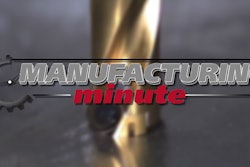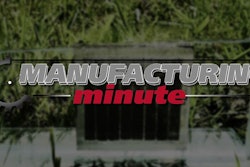The connected enterprise is no longer a futuristic vision. Organizations across a wide range of industries are embracing the industrial Internet of things (IIoT) to create smarter, more efficient plants and supply chains. Estimates of the number of connected devices by 2020 range from 50 billion to more than 200 billion. Many of these devices will be industrial machines — from production line equipment to pipeline pumps and monitors — transforming manufacturing and process automation.
But achieving the full promise of the IIoT means merging manufacturing operations and control systems with business planning and logistics systems. This merging of operational technology (OT) and business technology (IT) — which have traditionally existed in isolation from each other — is a critical challenge for many organizations. Yet breaking down these silos is essential to enable the data synergy that is at the heart of the IIoT value proposition — data that fuels the analytics that optimize efficiency and generate new business insights.
Different Technology Priorities
Part of the challenge of merging OT and IT lies in aligning the varying priorities of these two disciplines. OT places availability at the very top of its priority list. Any interruption in the enterprise operations and control systems can have a devastating impact on plant productivity and visibility. While IT also values availability, it places a higher priority on ensuring the security and integrity of the data and systems in its charge. Any lost, stolen or corrupted data undermines IT’s ability to perform its function. Satisfying the needs of both camps is key to successfully merging system environments.
Another challenge lies in the fact that many OT systems that keep the plant running — from plant asset management and MES systems to SCADA systems and historians — are often older, outdated applications residing on dedicated hardware. This creates numerous single points of failure and makes it difficult or impossible to integrate data for advanced analytics. Moving to IIoT will require migrating to new, more flexible, more connected platforms that enable synergistic use of data throughout the infrastructure, including sensors and machines at the edge, on the plant floor.
Virtualization Benefits and Risks
This means moving to tried-and-true technologies long employed in the IT world, including virtualization. Migrating from discrete systems to virtual machines offers many benefits, from increased interoperability and greater infrastructure efficiency to easier application upgrades. But it also presents a challenge: Consolidating IT and OT systems on a single physical machine replaces many points of potential failure with a single point, which can increase exposure to unplanned downtime.
Addressing this potential risk point with a robust availability strategy is crucial to the success of any IIoT implementation.
Four Best Practices
As manufacturing organizations merge their OT and IT infrastructures, I believe there are a few best practices to keep in mind with regard to system availability:
1. Understand Your Uptime Needs
What level of uninterrupted application processing do you need? Understanding the business impact of various levels of downtime will help inform your availability strategy. Consider the potential cost to the enterprise of unplanned downtime of a key production system — how much is 30 minutes of downtime worth? How about a day? Getting a handle on this is essential to make informed decisions — like whether a particular system requires “five nines” availability or just “three nines.”
Critical manufacturing automation systems will likely require very high availability, demanding a fault-tolerant solution with “five nines” availability. While traditional hardware solutions, such as high-availability clusters, can deliver this, a hardware-based approach negates the advantages of virtualization. Software-based approaches, on the other hand, offer the advantage of running on industry-standard servers — exactly the type of servers your virtualized environment will likely be based on.
2. Protect Your “Inflight” Data
One of the key characteristics of the IIoT is the immense amount of data being continually exchanged from the “things” throughout the plant to central data stores and analytics engines. Instead of supervisory control systems gathering data every few minutes or even hours, we’re talking about data flows occurring in millisecond intervals. It’s important to understand the impact of losing this data in transit in the event of a system failure.
How valuable is the data? In IIoT implementations where data collected at the edge enables very fine granularity of machine control and monitoring, this data could be very valuable. For example, losing data used by analytics to predict that a motor, valve or pump is about to fail could result in unplanned downtime for that production line. For this important data, you may need an availability solution that ensures zero loss of data — including data inflight between systems.
3. Keep it Simple
The IT world is comfortable with complexity. But when merging IT and OT systems, simplicity becomes crucially important. The further out toward the edge a system is, the greater the need for simplicity. This is because operational staff generally don’t have the advanced technical IT training or special skillsets that are common back in the corporate data center.
Make sure that your availability solution is simple to deploy, easy to operate and manage, and doesn’t require a lot of care and feeding. After all, operational teams already have enough to worry about just making sure the plant is running properly, and counting on stretched IT resources has its own set of challenges.
4. Keep Your Options Open
Perhaps your organization isn’t ready for a true IIoT infrastructure yet. But you want to keep your options open for when you are ready. That means investing in systems based on industry standards that maximize your future flexibility. The same goes for your approach to availability. Focusing on solutions that make it easy to integrate with new technologies, while preserving your existing investments, not only reduce capital costs but also minimize disruption in your environment.
Big Challenge, Big Return
They say nothing worthwhile is easy. Migrating from a legacy automation environment to an IIoT environment is not a simple undertaking. However, it can produce impressive, measurable results. Some industry observers have stated that 94 percent of businesses have already achieved a return on investment from machine-to-machine communication. One gas pipeline enterprise we work with saved $2.3 million in maintenance downtime costs in 2014 due in large part to IIoT elements in its pipeline operations.
And we’re just at the beginning of the IIoT benefit curve. As connectivity between IT and OT systems expands, so does the synergistic value of the combined data they generate. Taking a thoughtful approach to merging IT and OT systems truly can make 1 + 1 = 3.
John Fryer is Senior Director of Product Management & Marketing at Stratus Technologies.























